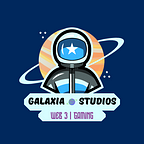Interoperable NFTs: Ensuring True Ownership Across Multiple Games
Non-Fungible Tokens (NFTs) have revolutionized digital ownership by providing a secure and verifiable way to represent unique assets on the blockchain. In gaming, NFTs enable players to own and trade in-game items, characters, and assets with true ownership and scarcity. Interoperable NFTs take this concept a step further by allowing these digital assets to be utilized across multiple games and platforms, ensuring portability, value retention, and a seamless player experience. This article explores the concept of interoperable NFTs, their benefits, implementation challenges, and the future implications for the gaming industry.
Understanding Interoperable NFTs
Interoperable NFTs are blockchain-based tokens that adhere to standards and protocols allowing them to be used and transferred across different games and platforms. Unlike traditional in-game assets that are locked within specific game ecosystems, interoperable NFTs enable players to retain ownership and use their assets in multiple virtual worlds.
Benefits of Interoperable NFTs
True Ownership and Portability:
- Interoperable NFTs ensure that players have true ownership of their digital assets, regardless of the game or platform they are using. Players can buy, sell, and trade assets freely, knowing they retain value and scarcity.
Cross-Game Utilization:
- Players can use their NFTs in different games, enhancing their utility and value. For example, a unique sword acquired in one game can be wielded in another, offering continuity and personalization across gaming experiences.
Economic Opportunity:
- Interoperable NFTs create a vibrant marketplace where players can buy and sell assets across multiple games. This opens up economic opportunities for players, developers, and creators, fostering a thriving ecosystem of digital goods.
Enhanced Player Engagement:
- By allowing players to carry their assets across games, interoperable NFTs encourage deeper engagement and loyalty. Players invest time and resources into acquiring and customizing their assets, creating a more personalized gaming experience.
Implementing Interoperable NFTs
Implementing interoperable NFTs involves several key considerations:
- Standardization: Developing or adhering to interoperability standards such as ERC-721 or ERC-1155 ensures compatibility across different blockchain platforms and games.
- Smart Contract Design: Creating smart contracts that support the transfer and functionality of NFTs across diverse environments while maintaining security and integrity.
- Integration with Game Mechanics: Designing games to recognize and utilize interoperable NFTs seamlessly, enhancing gameplay without compromising balance or fairness.
- User Experience: Ensuring a user-friendly experience for buying, selling, and transferring NFTs across various interfaces and platforms.
Challenges and Considerations
Despite their potential, interoperable NFTs present challenges that must be addressed:
- Technical Complexity: Ensuring interoperability across different blockchain networks and game architectures can be technically challenging.
- Scalability: Managing a growing ecosystem of interoperable NFTs requires scalable blockchain solutions capable of handling increased transaction volumes and interactions.
- Marketplace Integrity: Preventing fraud, counterfeit assets, and ensuring the integrity of the marketplace where interoperable NFTs are traded.
Future Implications
The future of interoperable NFTs holds significant promise for the gaming industry:
- Expansion of Digital Economies: Interoperable NFTs will contribute to the growth of decentralized and player-driven economies within gaming, fostering innovation and entrepreneurship.
- Cross-Platform Gaming: Players can seamlessly move between different gaming platforms while retaining their digital assets, promoting inclusivity and accessibility.
- Emergent Gameplay: Developers can create new gameplay mechanics and experiences that leverage the interoperability of NFTs, encouraging creativity and experimentation.
- Community and Collaboration: Interoperable NFTs encourage collaboration among developers and communities, leading to the creation of shared universes and interconnected gaming experiences.
Conclusion
Interoperable NFTs represent a transformative shift in how digital ownership and value are perceived within gaming. By enabling true ownership, portability, and cross-game utilization of digital assets, interoperable NFTs empower players, creators, and developers to participate in a more open and dynamic virtual economy. As the technology evolves and adoption grows, interoperable NFTs have the potential to redefine the gaming landscape, offering players richer, more personalized, and interconnected gaming experiences that transcend traditional boundaries. Embracing interoperability not only enhances player engagement but also lays the foundation for a more inclusive and innovative future for gaming.
